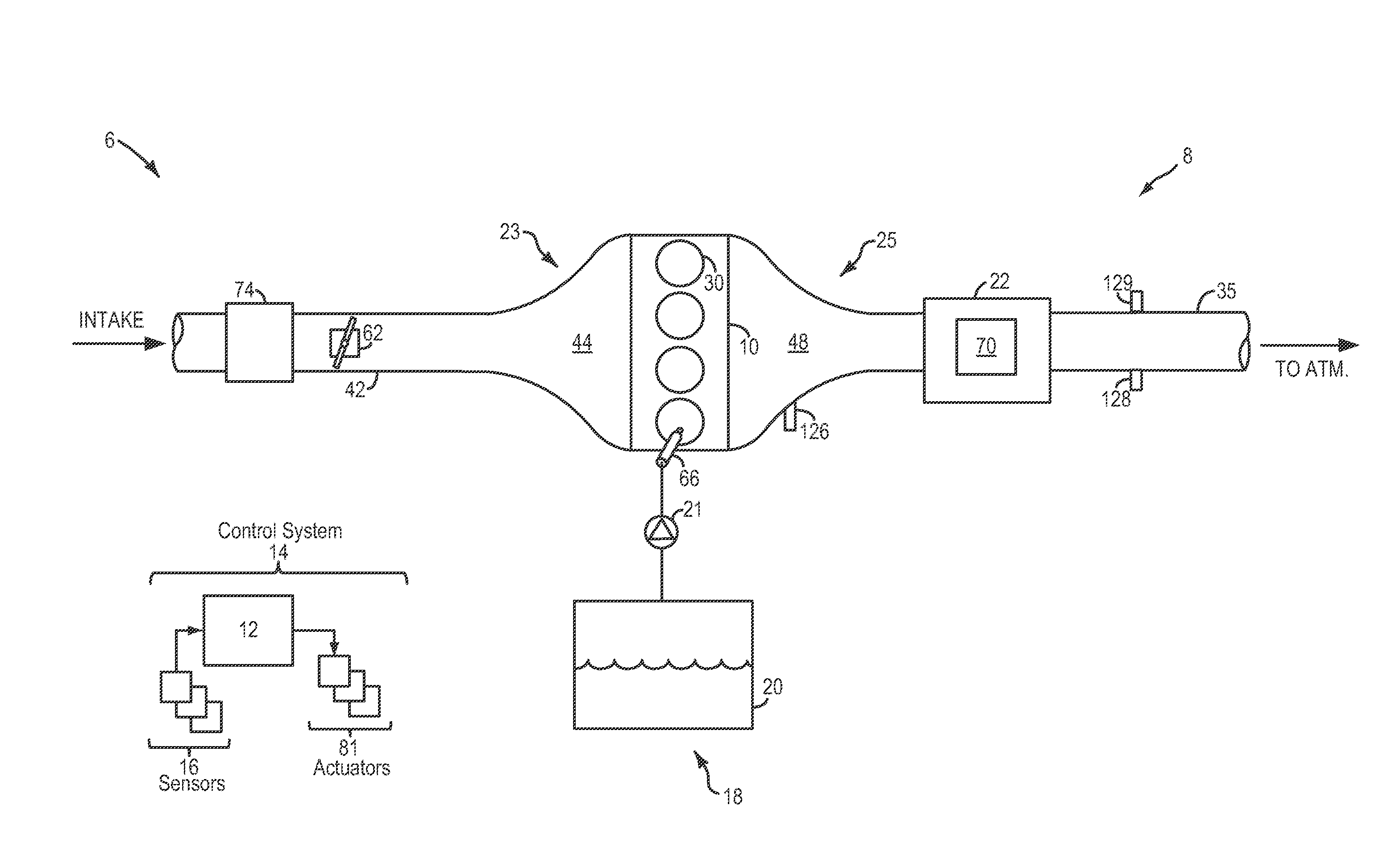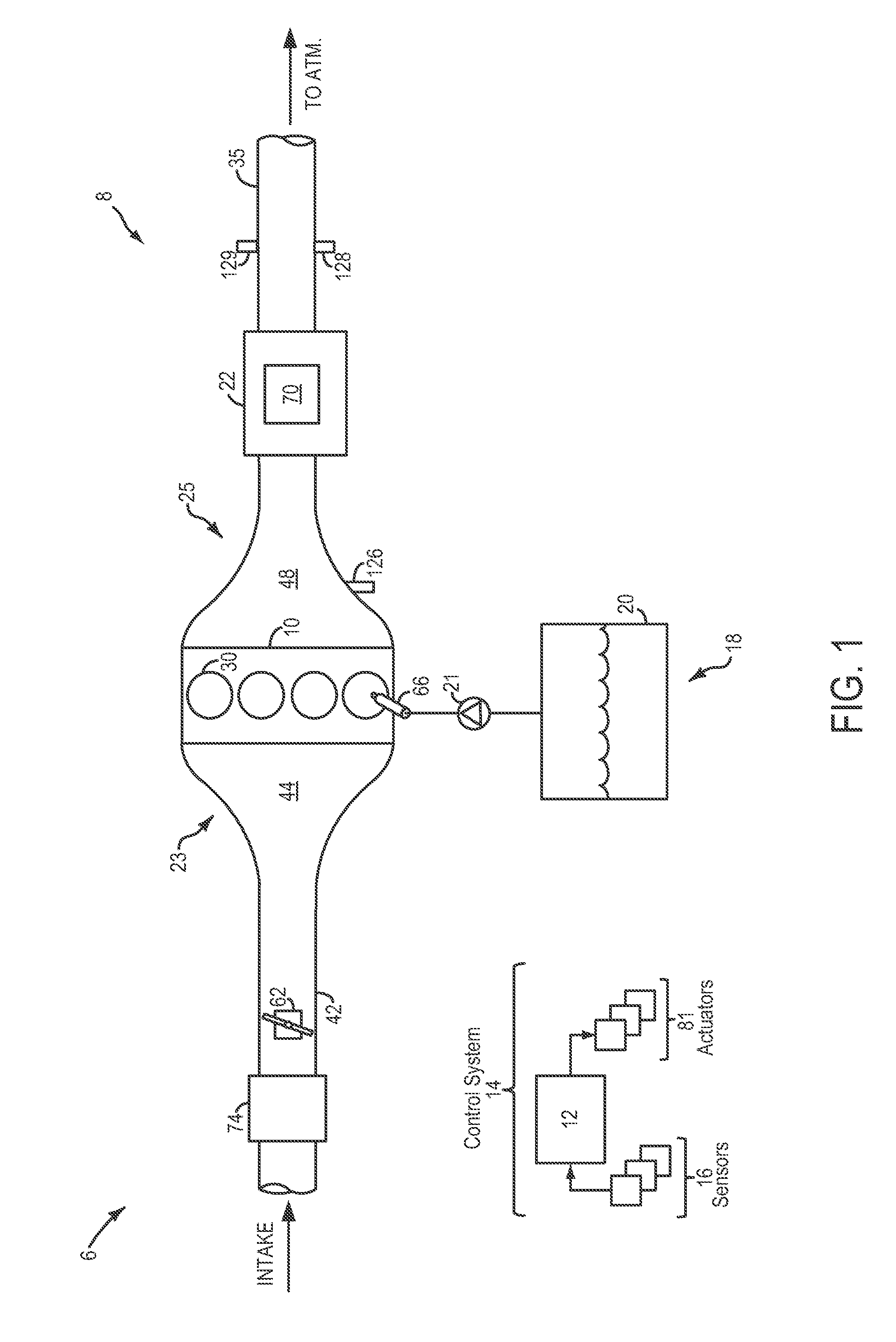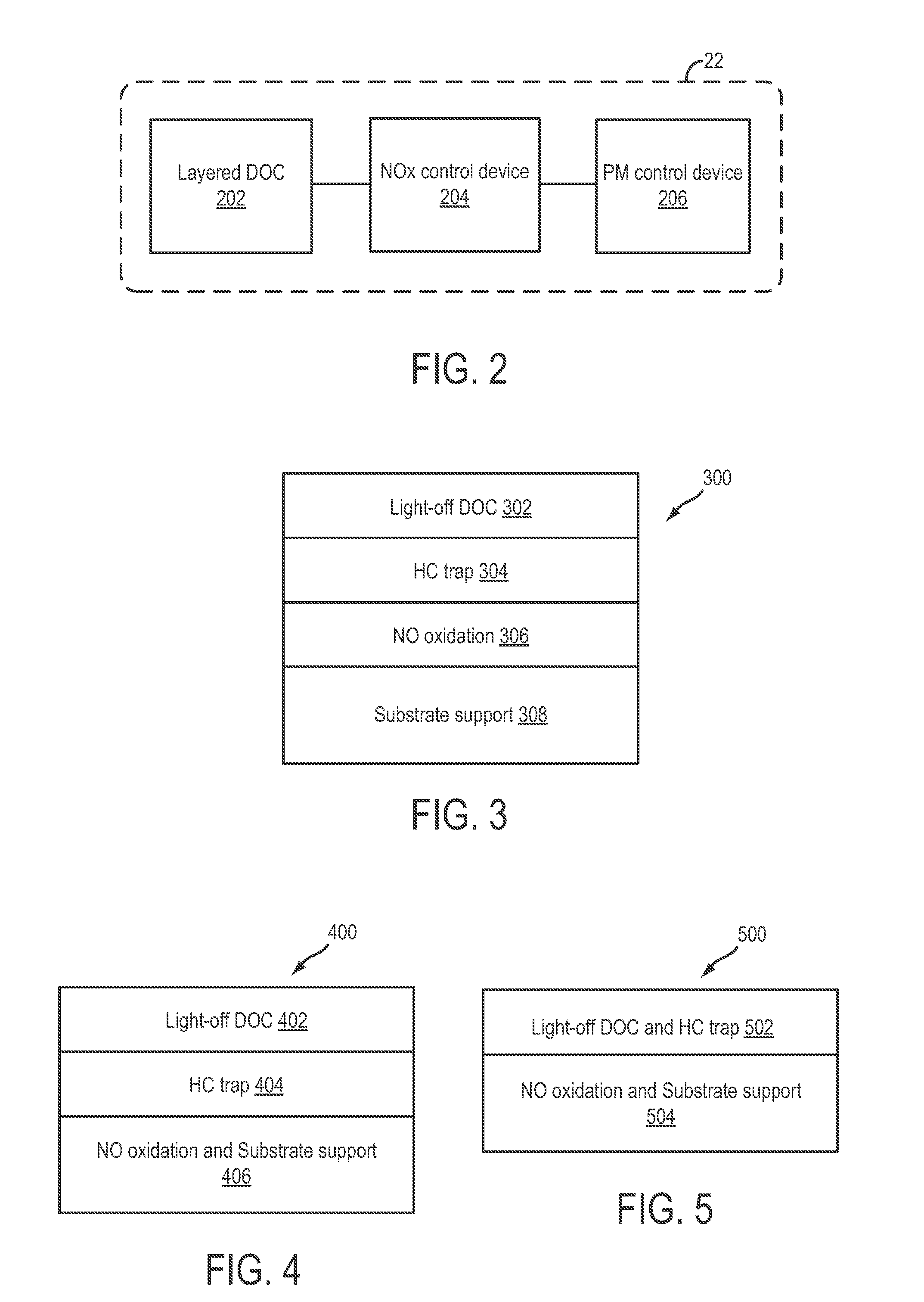Methods and systems for an engine emission control system
a technology of emission control system and engine, which is applied in the direction of arsenic compounds, silicon compounds, separation processes, etc., can solve the problems of affecting the no oxidation function of the catalyst, the temperature control strategy of the emission control device may not be achieved, and the failure to meet emissions compliance, etc., to achieve the effect of improving the capacity of the third layer, improving the formation of no2, and increasing the capacity of the second layer with the hc trap
- Summary
- Abstract
- Description
- Claims
- Application Information
AI Technical Summary
Benefits of technology
Problems solved by technology
Method used
Image
Examples
Embodiment Construction
[0013]The following description relates to systems and methods for a layered emission control device coupled to the exhaust manifold of an engine system, such as the engine system of FIG. 1. The layered emission control device may be a layered diesel oxidation catalyst (DOC) system, as shown in FIG. 2, positioned upstream of one or more other emission control devices, such as one or more NOx reducing catalysts and particulate matter (PM) filters coupled to the engine exhaust manifold. The various layers of the layered device may include different formulations for enabling different emission control functions to be performed within the spatial constraints of the device. The various formulations may be layered, as shown in FIGS. 3-5, so as to reduce functional interference while enabling functional synergies. As shown in FIG. 6, exhaust gas may be passed over and through the layered device to retain and oxidize exhaust hydrocarbons and raise the exhaust temperature, while oxidizing ex...
PUM
| Property | Measurement | Unit |
|---|---|---|
| Temperature | aaaaa | aaaaa |
| Porosity | aaaaa | aaaaa |
Abstract
Description
Claims
Application Information
 Login to View More
Login to View More - R&D
- Intellectual Property
- Life Sciences
- Materials
- Tech Scout
- Unparalleled Data Quality
- Higher Quality Content
- 60% Fewer Hallucinations
Browse by: Latest US Patents, China's latest patents, Technical Efficacy Thesaurus, Application Domain, Technology Topic, Popular Technical Reports.
© 2025 PatSnap. All rights reserved.Legal|Privacy policy|Modern Slavery Act Transparency Statement|Sitemap|About US| Contact US: help@patsnap.com



